Restoring the Windows System State
- This article is for Windows only
Summary:
Carbonite Safe Server Backup (CSSB) supports the recovery of Windows System State by restoring the Registry, Boot files, System files, Active Directory and more. When used correctly in combination with a File System Backup, a computer can be brought back to the exact state it was in at the time of backup.
Solution:
CSSB offers recovery of Windows System State on all the supported Windows platforms. The entire contents of the Windows System State backup will be restored. Selective restore of individual System State components is not possible.
You can restore your data to the original backed up computer or to a different computer.
Need to restore the System State to a Domain Controller? Follow these instructions: How to Restore System State on an Active Directory Domain Controller.
Please choose the scenario that best fits your situation:
The sections below are collapsed. Please click the section title to open / close a particular section.
The following requirements must be met, whether restoring to the original computer or to an alternate computer:
- The amandabackup / CarboniteUser user must have full access to the folder where the backups are stored.
- For cloud backups, this is the chosen Download Folder.
- For local backups, this is the folder where the backups are stored on the local disk.
- If the backups are stored in a network location, amandabackup / CarboniteUser must have access to the network folder. Please refer to How to Use External or Mapped Network Drives with CSB.
- Likewise, the amandabackup / CarboniteUser user must have full access to the folder(s) to which the backups are being restored.
Additional Requirements
- The Windows version of the restore computer (including Service Packs) must match the original computer where the System State backup was performed.
- For example, if the original computer was Windows Server 2003 with Service Pack 2, the computer you'd like to restore to must also be Windows Server 2003 with Service Pack 2.
- Any variation will result in failure to restore.
- It is strongly recommended to restore a System State backup to identical hardware as the original computer.
- Restore to similar hardware is usually possible, but may result in errors or failure to restore.
- The greater the dissimilarities between the hardware on the original and restore computers, the less likely it is that the System State restore will succeed.
- Restores for Server 2016 and newer, or for Windows 11 Pro 22H2 and newer require that the computer be in Safe Mode for the restore process. If a restore is attempted outside of Safe Mode it will fail.
If Carbonite Safe Server Backup is already installed on your computer, you can open the Enhanced Interface and begin restoring your data to your computer.
Restoring the Backup Data
To perform a system state restore, follow the steps below:
- Navigate to the Restore page and select the backup run associated with the System State backup you want to restore.
- You will be presented with two options:
- All items in this backup set - Choosing this option will restore all items from the selected backup set.
- Select items in this backup set - Choosing this option will allow you to browse for items to restore.
- After making your selection, click Continue to proceed.
- CSSB will show you all the relevant backup images for this restore operation (Only Full Backups will be availaibe for restore). The restored data will be exactly the same as it existed for the time stamp contained in the backup run images.
- The Choose your restore options field will default to Original Location.
- After confirming your settings, click Continue. Click Start My Restore to start the restore process.
You can restore your backed up data originating from one computer to a different computer. This method is mostly used to create a clone of the original system. For System State restores, you must install the same Windows Operating System (with the same service packs) on the restore computer as was installed on the original computer. This procedure requires some additional steps before you can launch the actual restore process. The steps are as follows:
1. Installing CSSB on the Target Computer
You will need to first install Carbonite Safe Server Backup on the computer you wish to restore the backup data.
- Sign in to your account at https://account.carbonite.com.
- Click the Install Carbonite button to install Carbonite Safe Server Backup on your computer.
-
An installation page will appear. You must select the version of Windows running on the server in order to get the correct installer and Cloud Certificate.
- Once the installation is complete, you can import your cloud backup certificate.
Back to Top | Back to Restoring to a Different Computer
2. Importing the Cloud Certificate
- launch Carbonite Safe Server Backup. If the Enhanced Interface displays an option for Import My Cloud Certificate, click it and follow the on-screen instructions. If no such import option exists on your screen, skip to next step. Once you have successfully imported your cloud certificate, proceed to importing your existing backup sets.
- Within the CSSB Enhanced Interface, click the Advanced link in the upper right hand corner.
- Within the Tools section, click Import Cloud Certificate.
- A Cloud Certificate Import window will appear, allowing you to browse to the location of your cloud certificate. Click the Browse button to select and upload your downloaded certificate.
- An Import Cloud Certificate window will appear. After selecting your cloud certificate (called cloud.opentext), click Open to proceed.
- Once your cloud certificate has been successfully uploaded, you will receive a notification message. Click Ok to close the window.
3. Importing Existing Backup Sets
To import existing backup sets, follow the steps below:
- Launch the CSSB Enhanced Interface. If an option to Restore data to this server exists, click it and proceed to step 3. If no such option exists, proceed to the next step.
- Navigate to the Advanced page, and within the Tools section click the Import Existing Backup Sets link.
- On the next screen that appears, you will have the option of selecting a local copy of your backup set or a copy in the cloud for import.
- After making your selection, enter information about the backups you wish to recover and click Import Backup Set.
- CSSB will scan for valid backups using the information you have provided. This process can take a long time to complete.
- When prompted, close and restart the CSSB Enhanced Interface to complete the Import Existing Backup Sets process.
- All functions, including reports and data restores, will be available for the backups and backup sets.
For additional information about importing existing backup sets, please view this Knowledge Base article.
Once the backup sets have been successfully imported by CSSB, you can follow the normal restoration steps outlined in Restoring the Backup Data.
4. Restoring the Backup Data
To perform a system state restore, follow the steps below:
- Navigate to the Restore page and select the backup run associated with the System State backup you want to restore.
- You will be presented with two options:
- All items in this backup set - Choosing this option will restore all items from the selected backup set.
- Select items in this backup set - Choosing this option will allow you to browse for items to restore.
- After making your selection, click Continue to proceed.
- CSSB will show you all the relevant backup images for this restore operation (Only Full Backups will be availaibe for restore). The restored data will be exactly the same as it existed for the time stamp contained in the backup run images.
- The Choose your restore options field will default to Original Location.
- After confirming your settings, click Continue. Click Start My Restore to start the restore process.




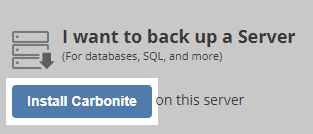
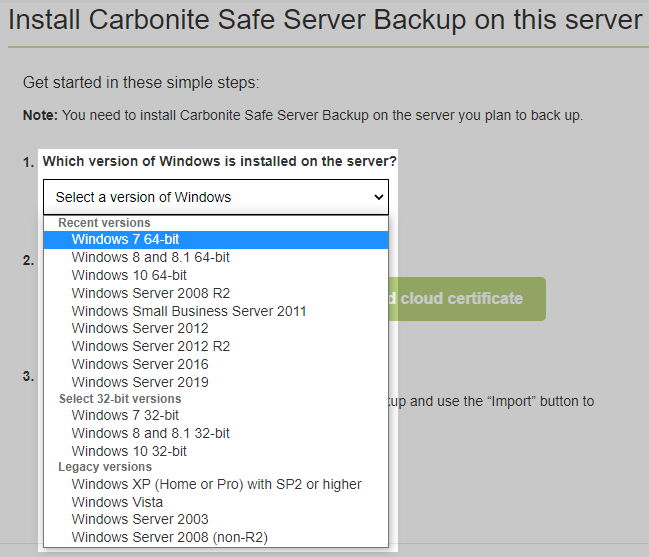



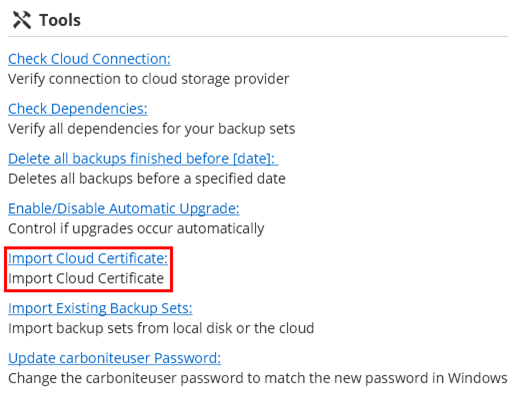
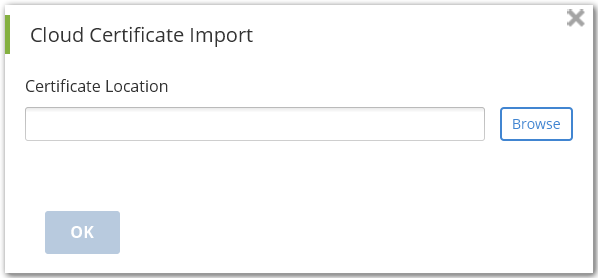
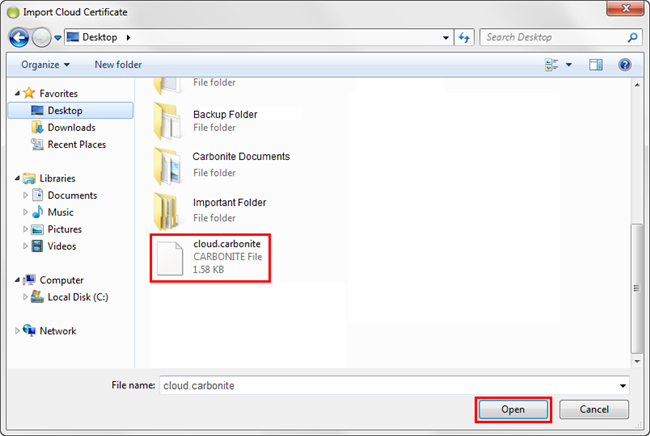


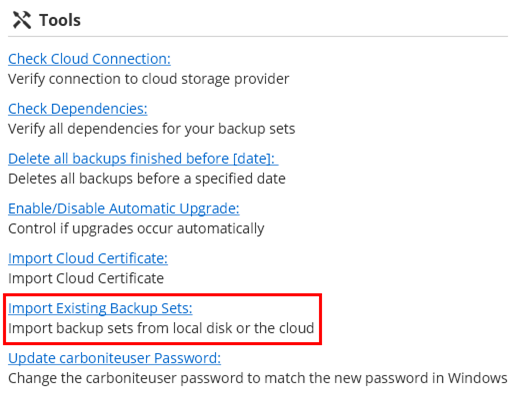

 Feedback
Feedback